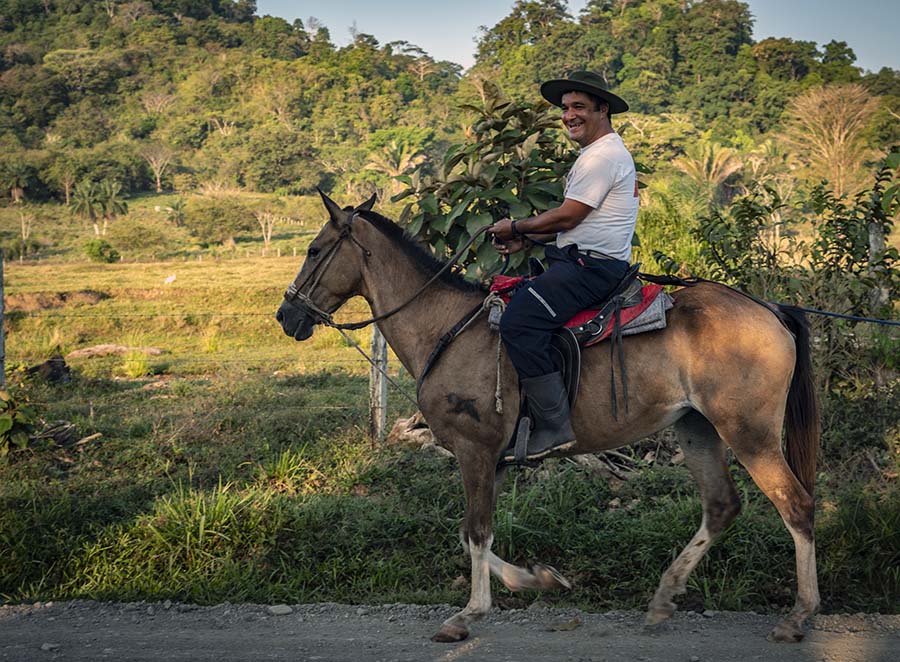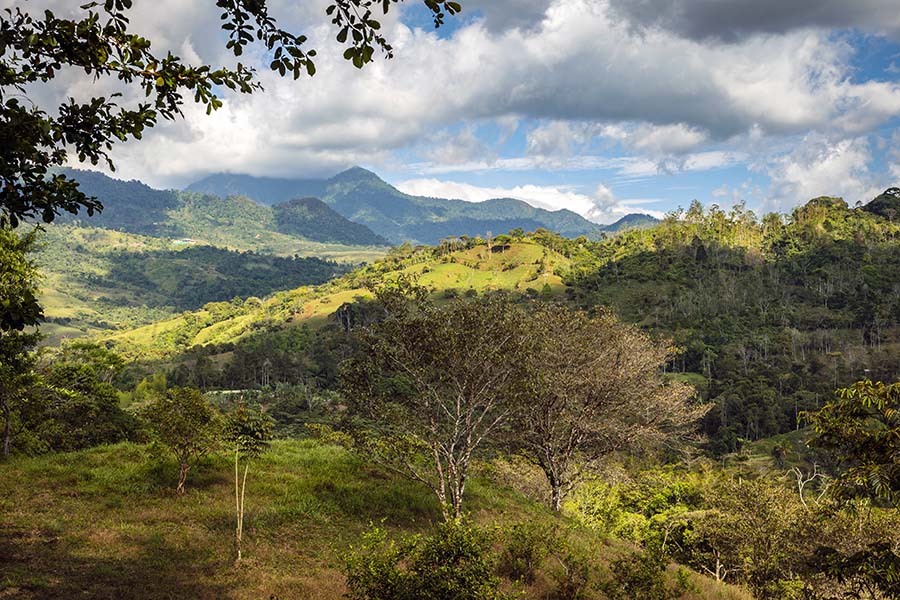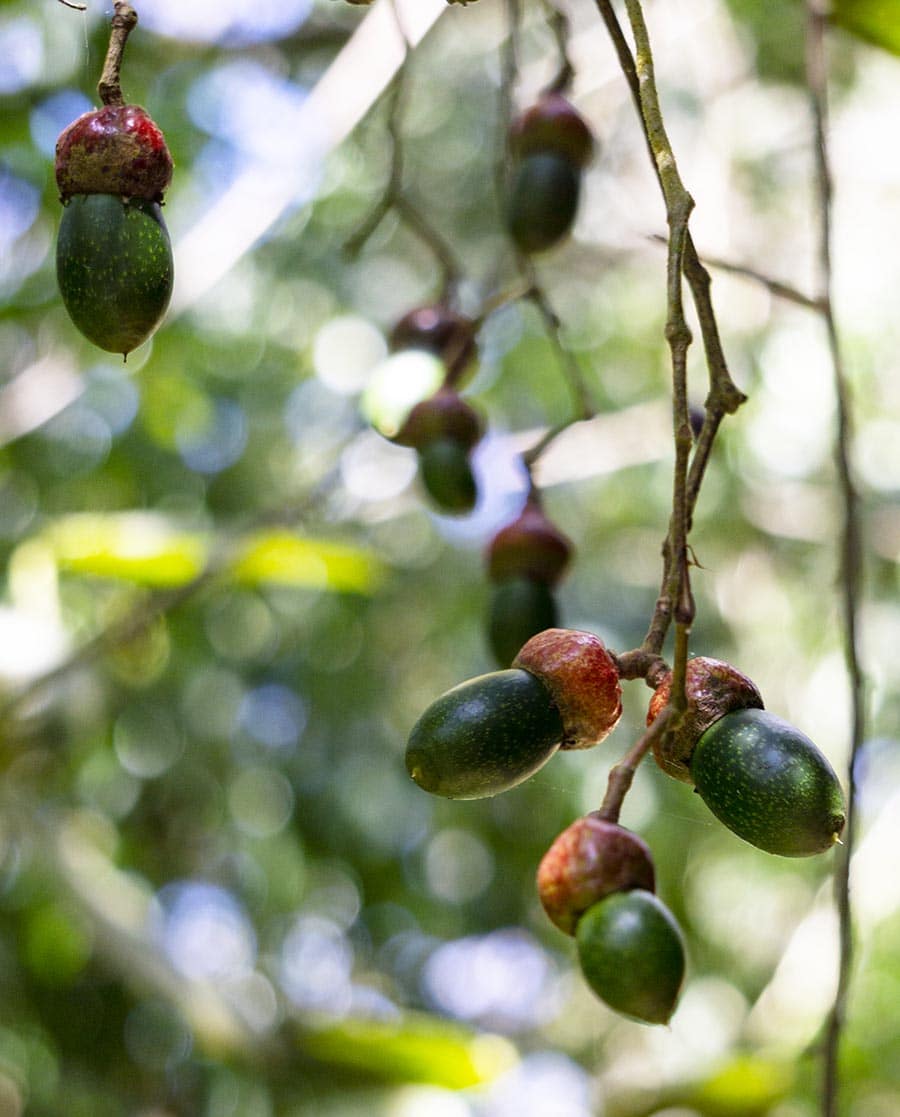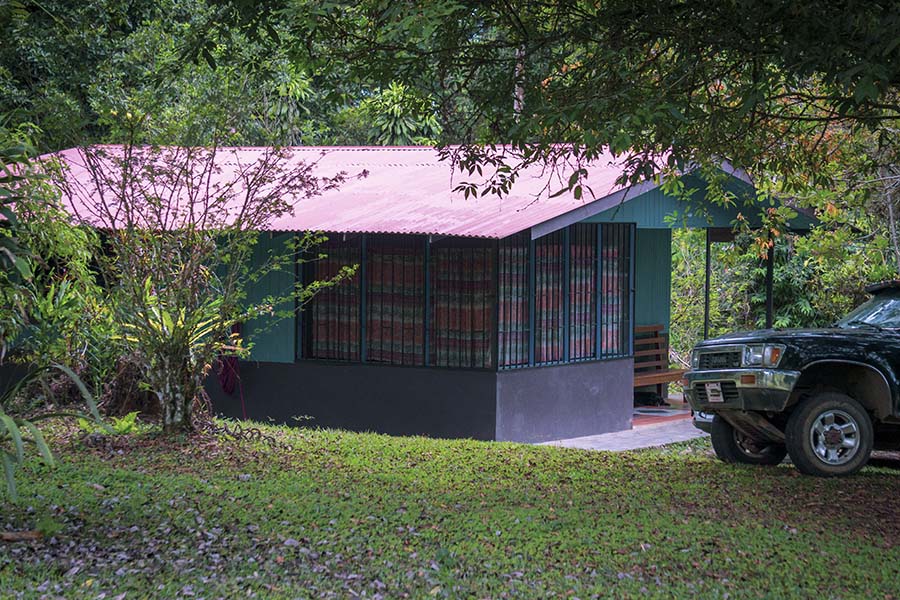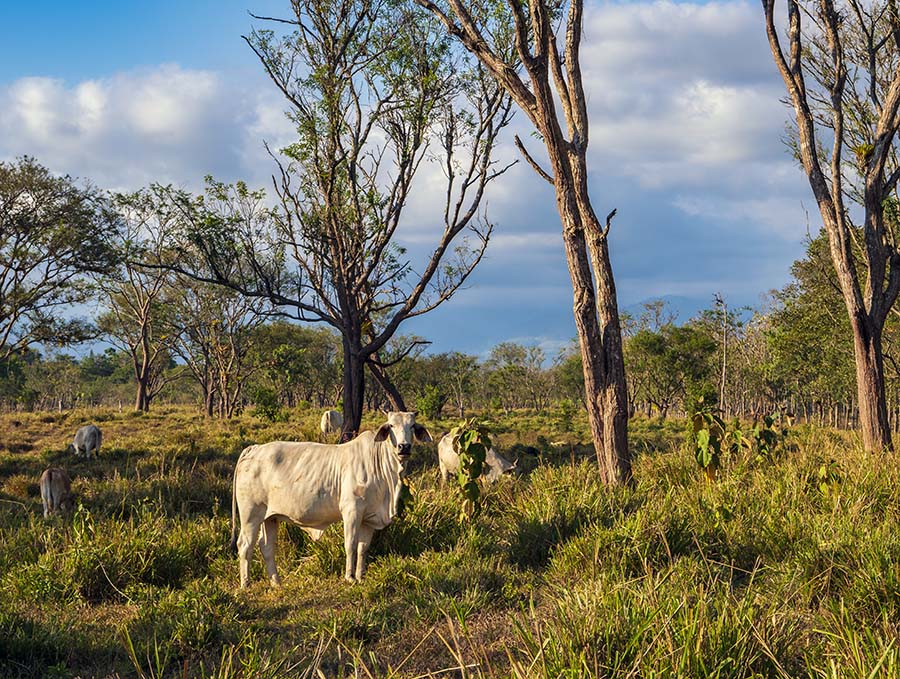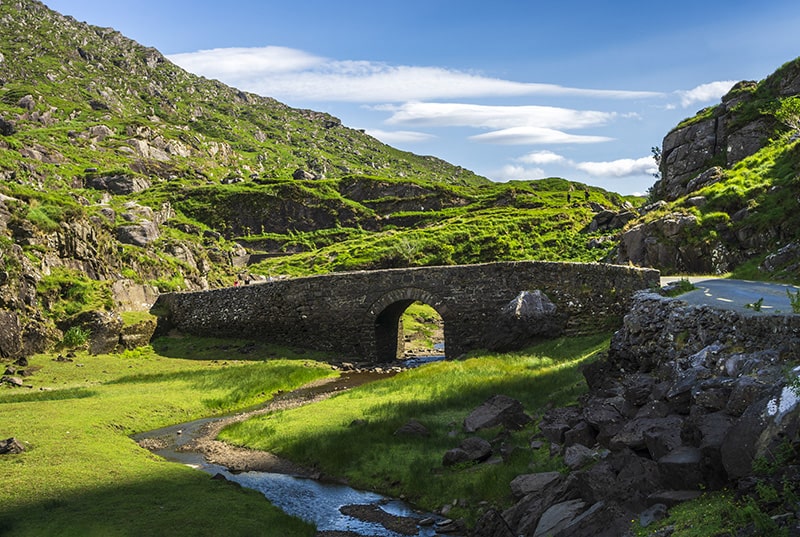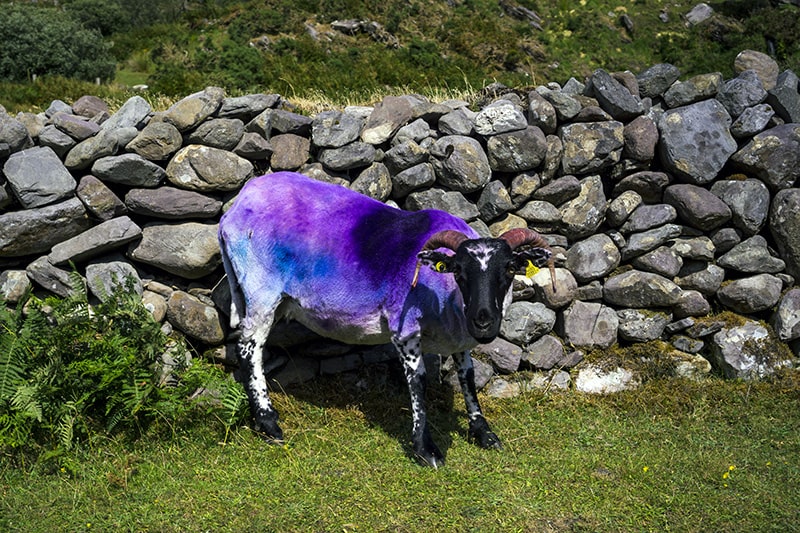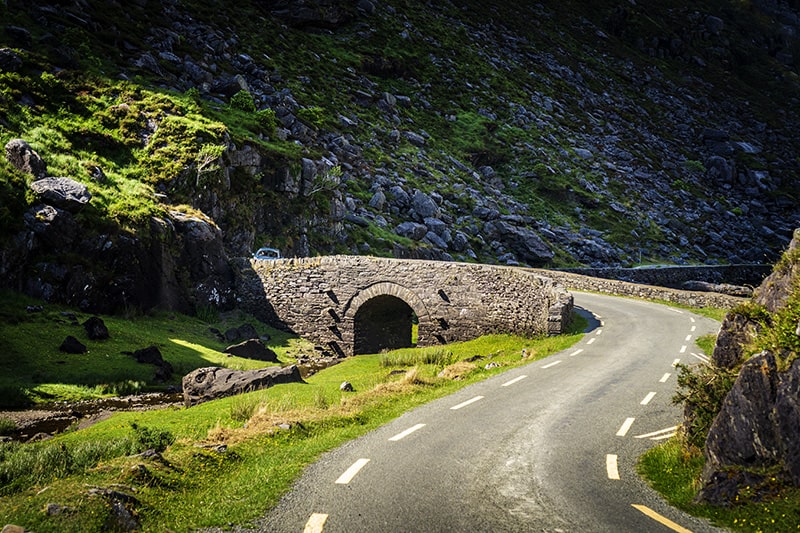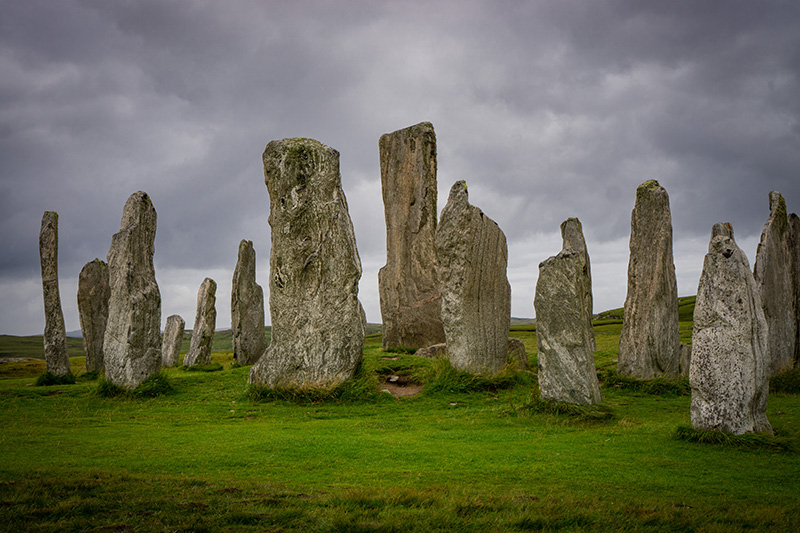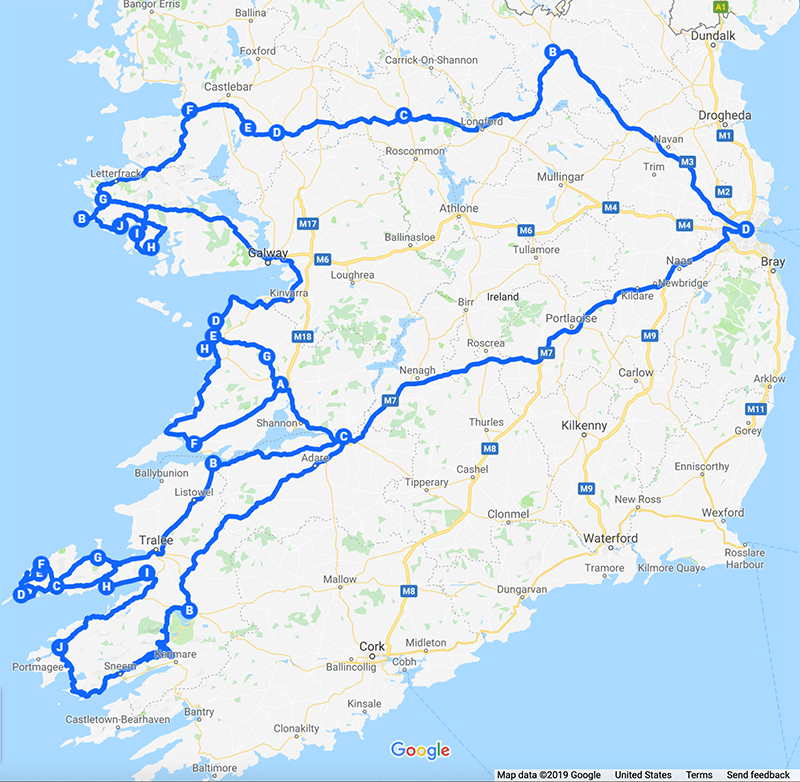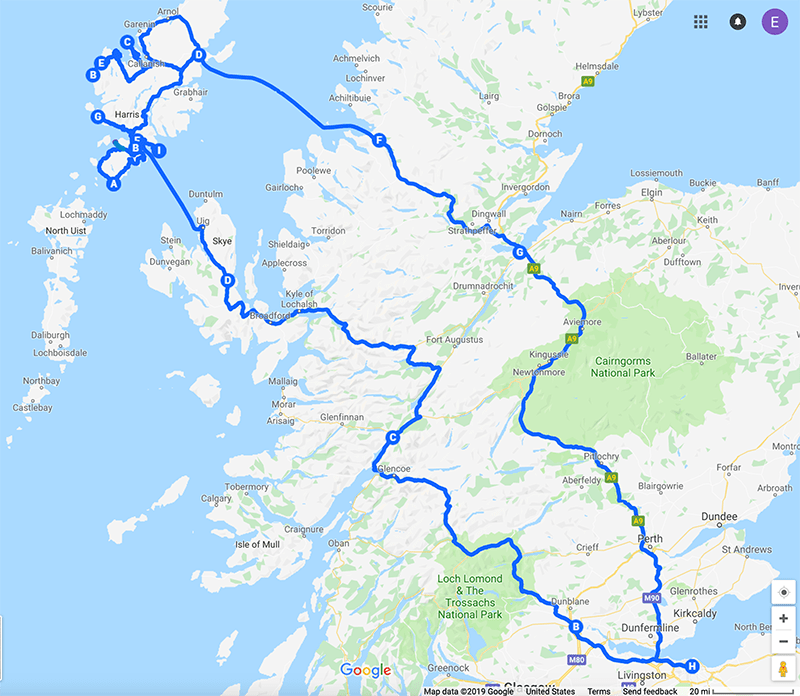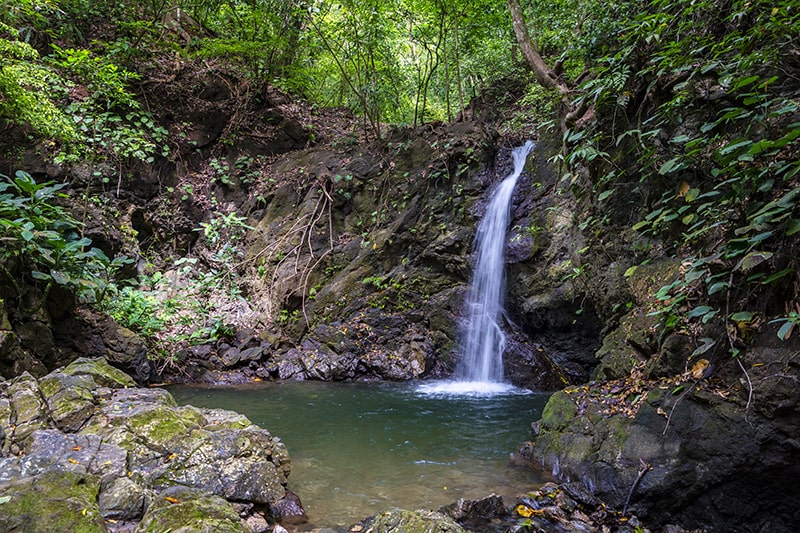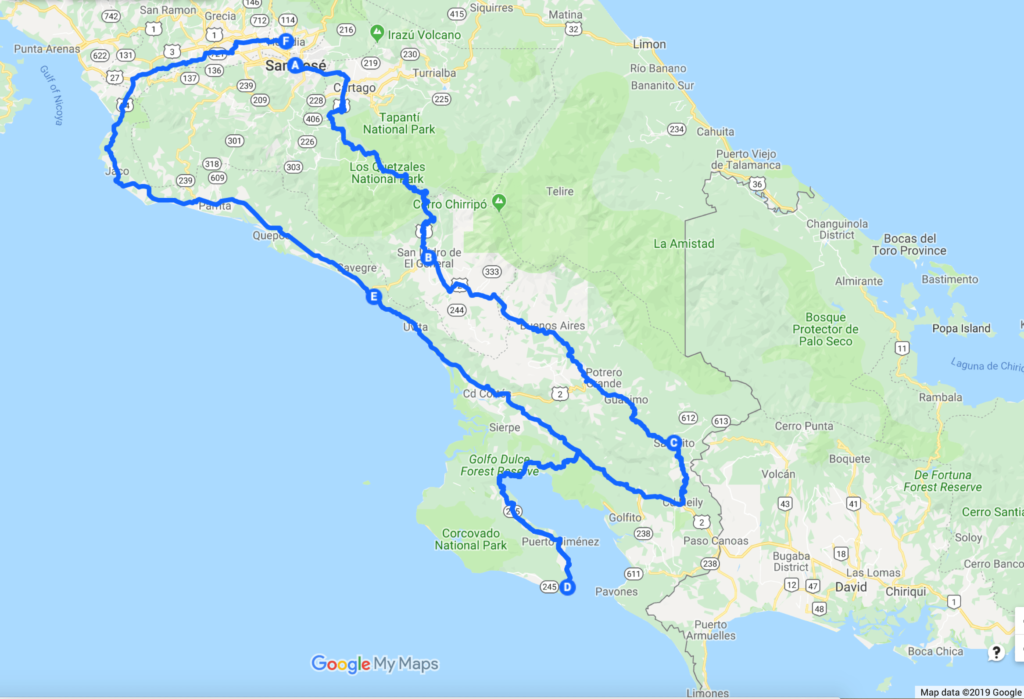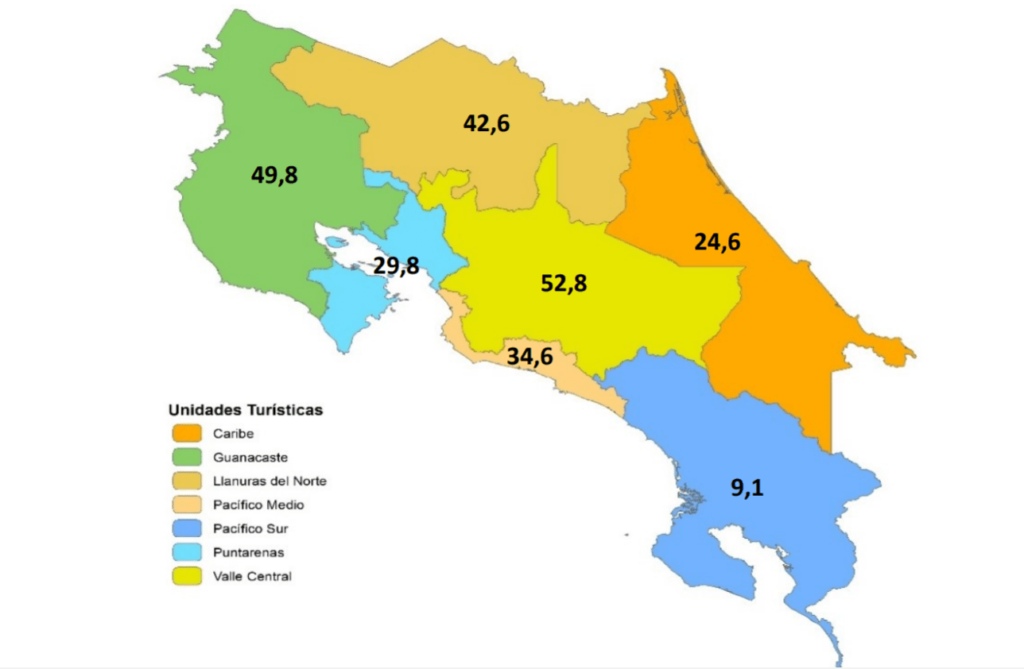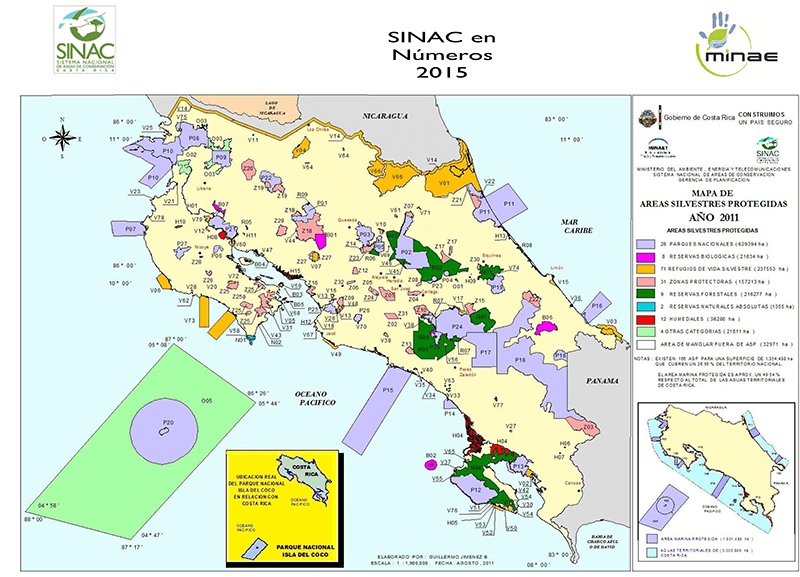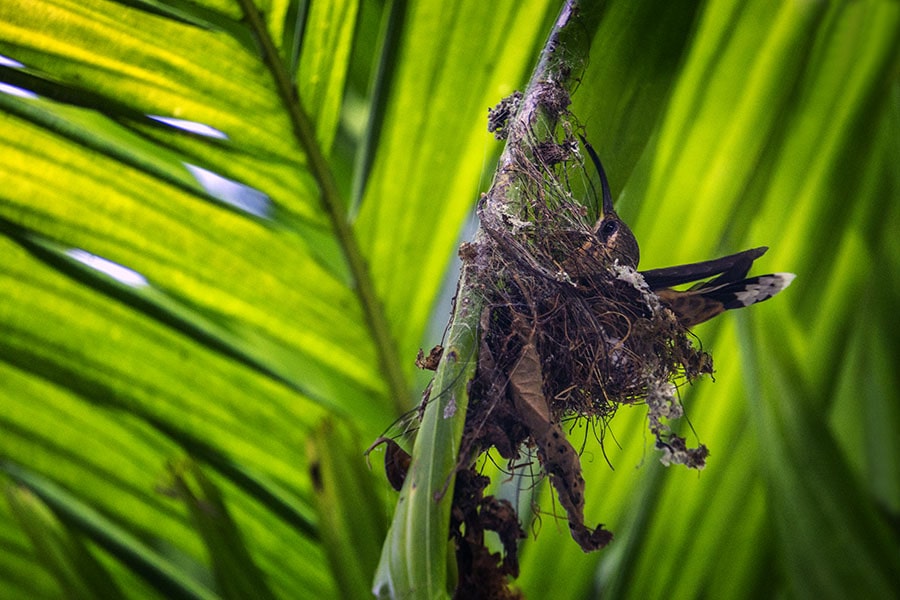
Los Cusingos Bird Sanctuary in Alexander Skutch Biological Corridor
Our search for “extraordinary” bird-watching places during a trip to Southern Costa Rica was handsomely rewarded. Following a birding “expedition” to Los Cusingos Bird Sanctuary, here it is what we’ve learned about it and the surrounding Alexander Skutch Biological Corridor.
What is a Biological Corridor?
First, a few words about the concept of Biological Corridors. It represents one of the most important conservation strategies currently promoted by the National System of Conservation Areas (SINAC) in Costa Rica. The purpose of a biological corridor is to provide connectivity “between protected wild areas, as well as between landscapes, ecosystems and habitats, natural or modified being rural or urban to ensure the maintenance of biodiversity and ecological processes and evolutionary; providing spaces of social agreement to promote investment in the conservation and sustainable use of biodiversity in those spaces.”
Costa Rica has a total of 47 biological corridors, which collectively cover over 30% of the country’s territory. The Alexander Skutch Biological Corridor (ASBC) is represented as #22 on the map of all Costa Rica’s biological corridors (SINAC).
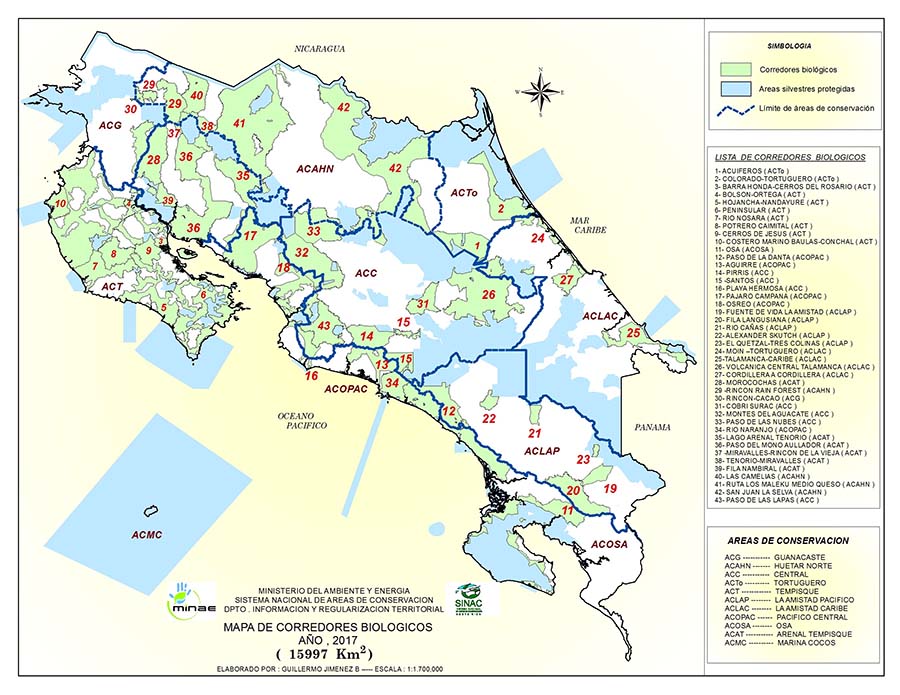
Biological Corridors of Costa Rica (SINAC)
Bird-Haven of Alexander Skutch Biological Corridor
Alexander Skutch Biological Corridor is situated in the El General Valley, between the Talamanca Mountain Range and the Coastal Mountain Range (Fila Costena). ACBS was created in 2004 to protect the area within the Rio Peñas Blancas watershed. This type of habitat is called Tropical Premontane Wet Life Zone. The area is a home for a variety of residential bird species and a “safe haven” for altitudinal and long-range migrants. According to the census conducted by the Tropical Scientific Center (which now operates Los Cusingos Bird Sanctuary), over 300 avian species have been recorded over the years, 200 of which has been described by Alexander Skutch himself.
Stretching between the lowlands of Los Cusingos Bird Sanctuary (elevation 650-750 m) in the south and the mid-elevation premontane forest (1200-1500 m) of the Las Nubes Nature Reserve in the north, Alexander Skutch Biological Corridor offers birdwatchers an opportunity to observe residential and migratory birds within different altitudes bands.
The corridor’s northern boundary is also a gateway to the highlands of Mount Chirripó. This area within the Chirripó National Park has its own unique habitat and population of birds, including endemic species, such as Volcano Hummingbird (Selasphorus flammula).
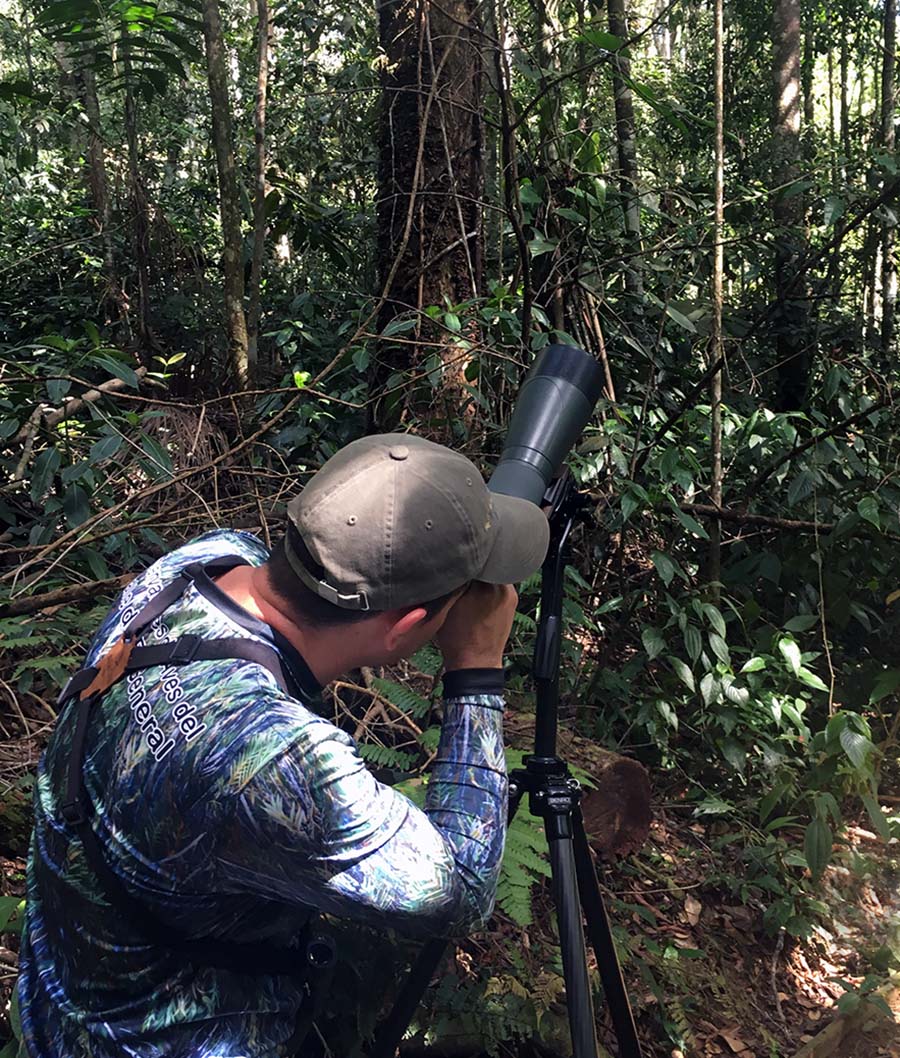
Birdwatching in Los Cusingos
Plants of Los Cusingos
“The forest is the cathedral in which I worship”
A.F. Skutch. “A question”, May 17, 1942
Los Cusingos is one of the last remaining forested lowland areas in El General Valley. In addition to animals, the refuge is home to a wide variety of plants. 298 native species of trees, shrubs and vines have been reported by a recent survey of the refuge (referenced below).
The most diverse group is Melastomataceae family (35 different species were reported), which is rather typical for mid-elevation areas of Costa Rica. The dark-blue fruits of melastomes serve as a popular food source for birds in the sanctuary, especially among manakins and tanagers. Birds ‘return the favor” by doing a great job as seed dispersers for this ubiquitous group of plants (Stiles & Rosselli, 1993).
Several fern species, including endemic and threatened species, such as Cyathea bicrenate and Cyathea multiflora, can be spotted near the garden and along the trails. A dozen palm species have also been described in Los Cusingos, including a walking palm (Socratea exorrhiza or chonta) with distinctive widely spaced roots covered with spines.

Walking Palms
Rare plants, such as vulnerable Tocoyena pittieri and endangered Weberocereus imitans, Costa Rican endemics Tabernaemontana pauli and a native bamboo species Chusquea simpliciflora have also been recorded.
“A survey of the woody and climbing plants of the Refugio de Aves Dr. Alexander Skutch, “Los Cusingos”, Perez Zeledon Canton, Costa Rica” contains a full list of 314 species of trees, shrubs and vines of Los Cusingos (217 genera and 84 families).
Brief History of Los Cusingos, Alexander Skutch’s Home
Around the time Alexander Skutch Biological Corridor was created, a questionnaire survey of visitors to Los Cusingos was conducted. Surprisingly, most travelers to the area were not familiar with Dr. Alexander Skutch’s life and contribution to the field of neotropical ornithology.
I sure hope it’s been changing. The man had a fascinating scientific career (including his dramatic professional makeover) and an inspirational life philosophy. It does not take a trivial amount of courage to quit a successful post-doctorate job as a botanist (during the Great Depression!) to make a transition into a brand-new field of ornithology. This remarkable “foliage to plumage” makeover eventually resulted in publication of 20 scientific books and over 200 articles about tropical birds (in addition to dozens philosophy books and papers).
Gary Stiles (who together with Dr. Skutch co-authored one of the most popular books on tropical birds “Guide to the Birds of Costa Rica”) rightfully stated:
“The legacy of Alexander Skutch to Neotropical ornithology is, quite simply, the largest body of natural-history information ever collected by a single observer.”
Here is an extensive bibliography of Alexander Skutch. This collection of books and articles (many of which are in a pdf format) is a great resource for any birding enthusiast or anyone interested in Alexander Skutch’s legacy in science and philosophy. You can also learn more about Alexander Skutch’s career transition and his first years living in Los Cusingos from his notes, which were edited and compiled by Peter Scheers: “Early Views of Alexander F. Skutch: Selection from his nature diaries, philosophical notebooks (1929-1941)”.

Writing Desk and Typewriter of Alexander Skutch
Interestingly, a genus of birds bore Dr. Skutch’s name (Skutchia), in recognition of his contribution to the field of ornithology. Unfortunately, the monotypic Skutchia genus (with a single ant-eater species Pale-faced Antbird (Skutchia borbae)) was recently merged into Phlegopsis (Thamnophilidae), based on genetic evidence.
During his post-doctoral studies in Panama, Skutch became increasingly interested in neotropical birds. This powerful calling turned later into a lifelong passion and second scientific career. Spending all his time “in the field”, Alexander Skutch has described and published feeding, nesting, parenting behaviors and sociobiology of over two hundreds of neotropical bird species.
However, before Skutch made a name for himself in ornithology, the botanical projects were “paying his bills”. For almost a decade, Skutch was embarking on various expeditions to collect plants for botanical gardens, universities and natural history museums around the world. National Herbarium in Washington, the Arnold Arboretum of Harvard University, Kew Gardens, the Naturhistoriska Riksmuseet, the Missouri Botanical Gardens, Field Museum in Chicago, the New York Botanical Gardens, were all among Dr. Skutch’s customers buying his herbarium specimens.
After a decade of saving money and searching for a perfect place to call his own, Skutch’s dream finally came true. In 1941, he paid 5000 colons for 53 hectares of farmland and primary growth forest on the banks of Peñas Blanca River in the El General Valley. A year later, Skutch expanded the property to 77 hectares by buying a neighboring farm. This became “Los Cusingos”, Alexander Skutch’s home for over 60 years.
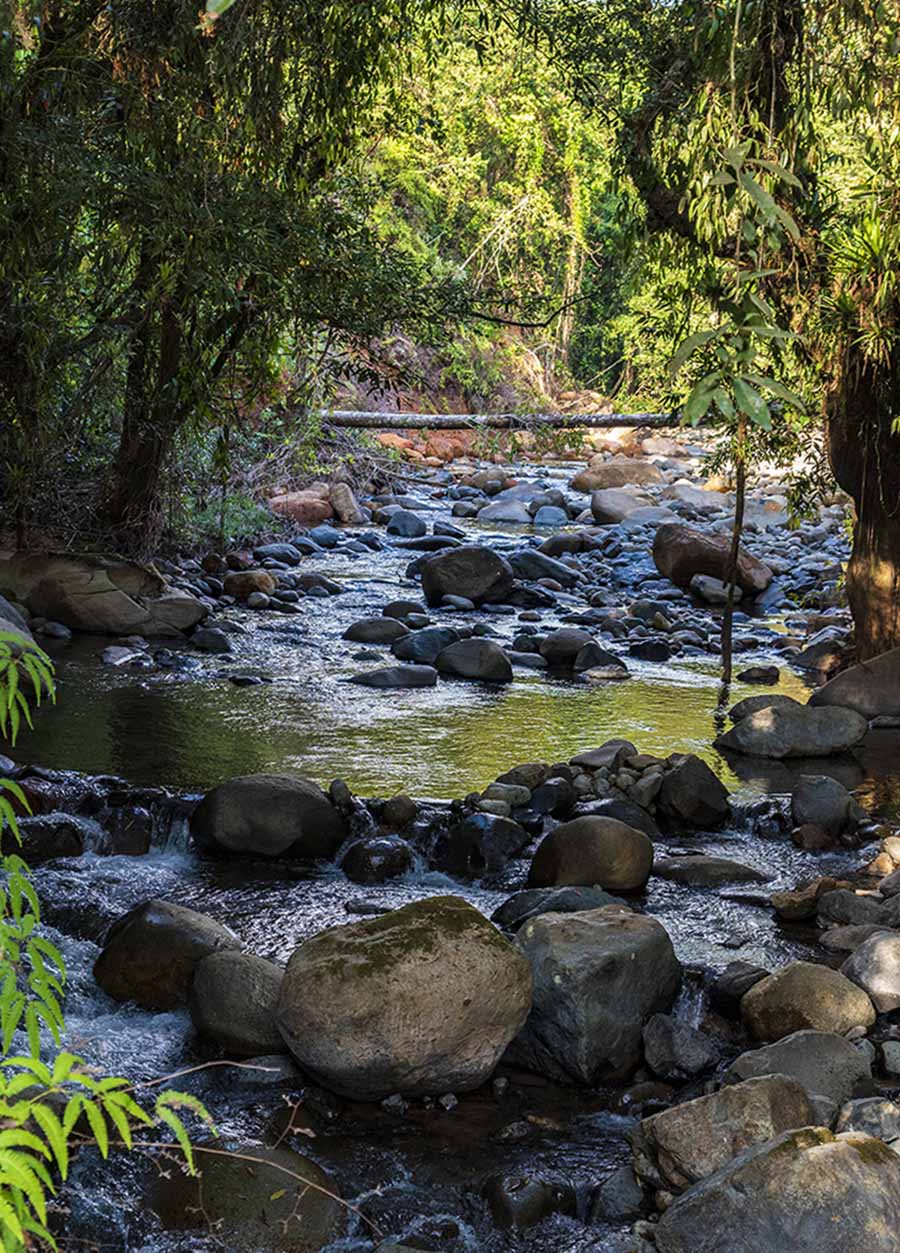
El Río Peñas Blancas
“Los Cusingos” – What is in the Name?
Los Cusingos is the local name for the Fiery-billed Araçari (Pteroglossus frantzii), a smaller member of the toucan family, which is fairly common in the area. Although these birds (characterized by Dr. Skutch himself as “presumptuous bandits” for their distinctive behavior) were not among his “favorites”, Skutch named his farm by their vernacular name (los cusingos) to keep it simple and easy for the locals to pronounce. The birds of his choice, the Jacamar, did not have a common Costa Rican name at that time.
Early Days of Los Cusingos
With the purchase of “Los Cusingos”, Skutch became a homesteading naturalist, who truly appreciated a simple, almost ascetic, lifestyle. It allowed him to “use a small stock of energy for contemplation of the eternal truths”. Despite his academic background, Skutch did not shun manual labor. He built his own house and made wooden furniture (most of which visitors can still see in the House Museum at Los Cusingos).
“I love the unspoiled aspects of nature, forests and rivers and mountains, and shall never long be happy separated from them. I would rather earn my daily bread by the humblest rural occupation than occupy the most envied professorship at a university in some great city”
A.F. Skutch. Untitled, Journal, 1931
As a life-long vegetarian, he also grew his own food, including rice and beans, coffee and sugar cane. He, and later his family, remained living “off-the-grid” for almost 50 years, until mid-90s (when his wife, Pamela, at last, convinced him to get connected to electrical power and to buy their first refrigerator).
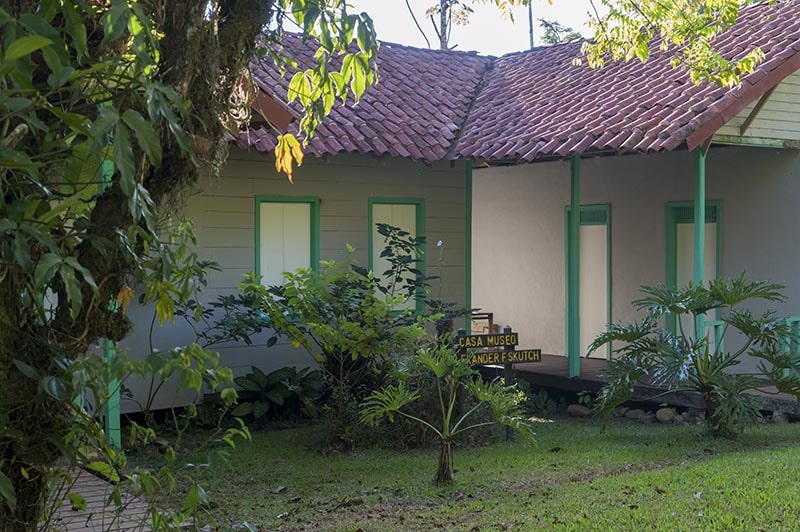
House of Alexander Skutch
In the early years, Skutch faced a great deal of adversity at Los Cusingos. He struggled through forest fires, sickness of his farm animals, and troubles with the neighbors, who did not “keep their pigs at home” or pay back their debts.
Early in the newfound career, Skutch also struggled to get his first tropical field ornithology books published anywhere. In 1944, he wrote:
”But in dedicating myself to the study of nature, I also committed myself to making my discoveries available to others. In this last I have lamentably failed; my books without exception remain unpublished”
“Study of the birds,” Thoughts, Vol. 2, June 8, 1944
Then came the recognition. In 1946-1947, he received a fellowship from Guggenheim Foundation, a renowned American scientific institution. Soon after, in recognition of his publications on Central American birds, he also became a Fellow of the American Ornithologists’ Union (AOU).
Despite enjoying the solitude of the tropical forest, Skutch did not seem to be fully content with his reclusive life of a bachelor. In 1950, he married Pamela Lankester (Lancaster), a daughter of an English naturalist and orchid enthusiast Charles Lankester (whose private gardens became one of the best botanical gardens and plant research centers of Costa Rica and is now named in his honor Jardin Botanico Lankester).
According to Skutch himself, Pamela’s arrival to Los Cusingos improved their “public relations with the neighbors”. Later, the couple adopted Edwin, a son of a local worker. Pamela and Alexander Skutch had lived happily at “Los Cosingos” until their last days, and were both buried on the grounds of the Bird Sanctuary, behind their house. Dr. Skutch passed away on May 12 (2004), just 8 days before his 100-years birthday. Pamela died 4 years prior.
Alexander Skutch Festival
Despite his uneasy early relations with the neighbors in Quizarra, Alexander Skutch’s legacy (and later his wife Pamela) had a profound effect on local community development. To celebrate his life and contribution, Alexander Skutch Festival was organized in 2013 by the York University Professor Felipe Montoya, as a part of the Las Nubes Project.
Ever since, the festival became a popular community tradition with mountain bike races around the Alexander Skutch Biological Corridor, horse races, soccer games, and much more. The festival is held every May on a weekend closest to Alexander Skutch’s birthday (May 20th). The proceeds from the sale of food and beverages during the festival go to the local school funding. For more information about the festival, check out the Las Nubes Project’s website.
